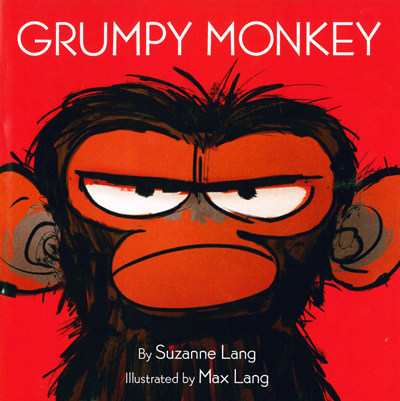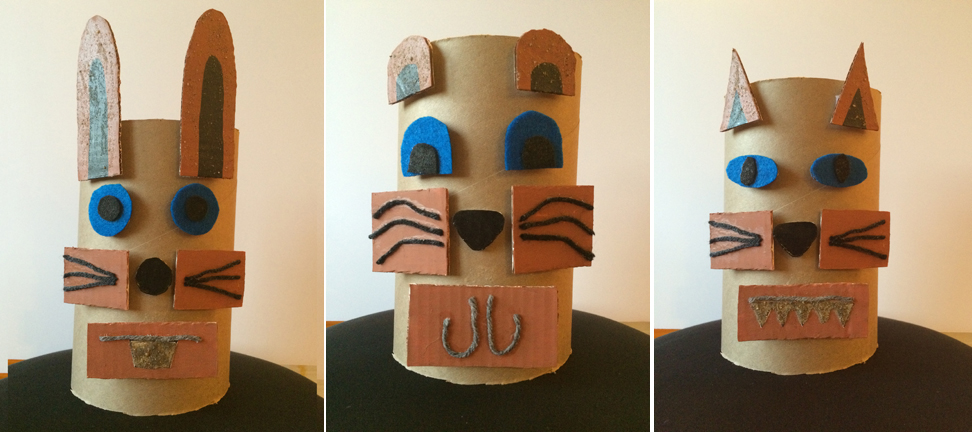Animal Games!
Jim Panzee has a lot of different animal friends in the jungle. Because Jim is grumpy, his friends try to improve his mood by suggesting he do the things they like to do — and the things they like to do are based on what type of animal they are.
In this funny part of the story, each of Jim's animal friends says exactly what you would expect them to say. The birds want him to sing. The monkeys want him to swing. The frog wants him to jump up and down, and the hyena wants him to laugh! You can guess what each animal might say based on their own, unique traits.
Animal Similes
Let's explore different animal traits by looking at how we talk about or describe animals, like when we use similes. A simile is a figure of speech that compares two different things in an interesting way. The simile is usually in a phrase that begins with "as" or "like." An example of a simile is: She is as innocent as an angel.
Take a look at the similes below, and fill in the blank with the name of the animal you think best completes each sentence. After you've answered them all, think about why you chose your answers.
Which animal best completes each sentence: clam, bee, fox, peacock, bird, lamb, owl, dog, pig, mouse, ox, snail, beaver, eel, lion, or mule? Some might be trickier than others!
As strong as an ___.
As proud as a ___.
As wise as an ___.
As quiet as a___.
As slippery as an ___.
As happy as a ___.
As sly as a ___.
As innocent as a ___.
As busy as a ___.
As slow as a ___.
As brave as a ___.
As fat as a ___.
As free as a ___.
As eager as a ___.
As stubborn as a ___.
As sick as ___.
Animal Idioms
Have you ever heard someone say, "You let the cat out of the bag?" Or that "It's raining cats and dogs?" These expressions are called idioms.
Idioms are funny because they don't mean exactly what they say! They have a meaning that is different from the actual words that are used. When someone says you "let the cat out of the bag," they don't mean you literally had a cat in a bag and you let it out. They mean you have revealed something that was supposed to be a secret.
Here's a list of some common animal idioms. How many have you heard before? Which ones make sense, and which ones simply don't make any sense at all? Can you think of any animal idioms that aren't listed below?
The elephant in the room
This refers to a problem that is too big to ignore, but that everyone tries to avoid talking about because it is embarrassing or will cause conflict.
The lion's share
This refers to the biggest part or portion of something.
Hold your horses!
This means "Wait a minute! Slow down! Don't be in such a hurry."
That really gets my goat!
Something that "gets your goat" is something that annoys you.
Let sleeping dogs lie.
This means let's not talk about things in the past that might cause problems if you mention them today. Think of it this way: A sleeping dog is peaceful, but if you wake him up, he might get angry and bite you.
A fish out of water
This means that you are very uncomfortable in a particular situation or environment.
Get your ducks in a row.
This means to straighten up and get organized, and usually refers to a project or task.
Pig-headed
A "pig-headed" person is stubborn, close-minded, and doesn't want to change.
Weasel out of something
This means to abandon responsibility or commitment in a way that is sneaky or cowardly.
The cat's meow
If you think something is "the cat's meow," it means you think it is excellent, wonderful, and really great.
A little bird (or birdie) told me.
This is a lighthearted way of saying that you've learned a secret, but you're not revealing who told you.
A bull in a china shop
This means a very clumsy person, or someone who makes a big mess out of everything. "China" is used to describe very delicate dishes. A bull is a large and reckless animal. Combine china and a bull, and you're setting up a disaster!
A deer caught in the headlights
This means being completely puzzled, surprised, or confused.
Animal Similes Answers
- As strong as an ox.
- As proud as a peacock.
- As wise as an owl.
- As quiet as a mouse.
- As slippery as an eel.
- As happy as a clam.
- As sly as a fox.
- As innocent as a lamb.
- As busy as a bee.
- As slow as a snail.
- As brave as a lion.
- As fat as a pig.
- As free as a bird.
- As eager as a beaver.
- As stubborn as a mule.
- As sick as a dog.
This activity was created by Tony Grima for Great Expectations.







